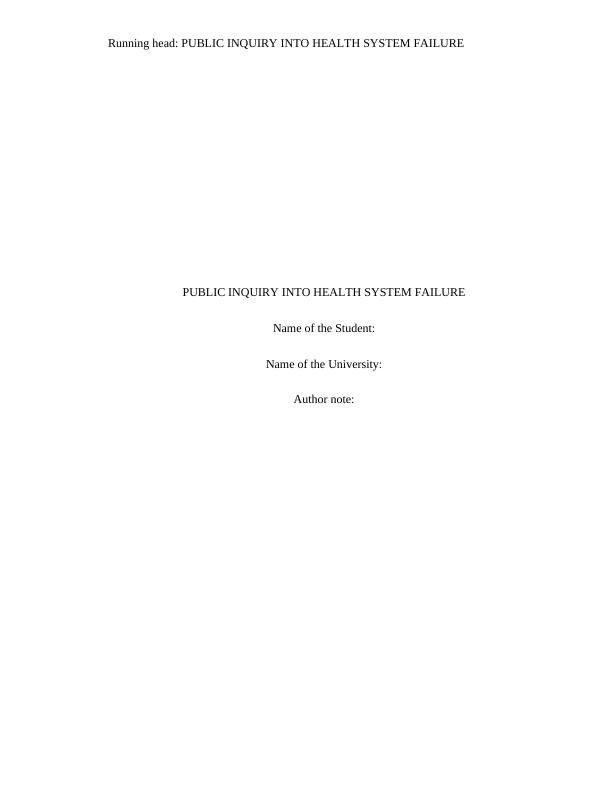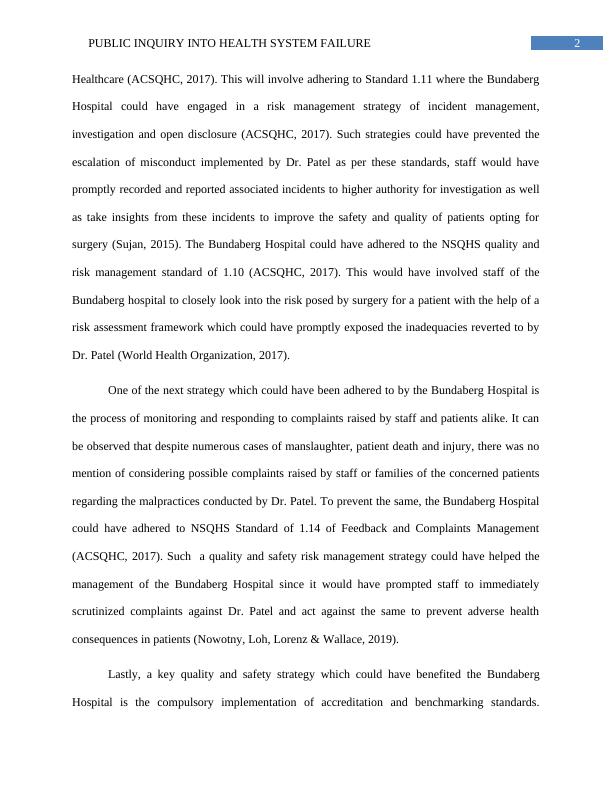Public Inquiry into Health System Failure
1000 word written assessment to appraise & critique a public inquiry into a health system failure and actions of staff. Case study is of the Bundaberg hospital deaths & surgical injuries of patients under surgeon Dr Jayant Patel.
9 Pages1883 Words54 Views
Added on 2023-01-05
About This Document
The paper examines the failures in healthcare quality and organizational culture at Bundaberg Hospital that led to the system's failure. It discusses the lack of adherence to quality and safety standards, the failure to respond to complaints and incidents, and the need for a sound organizational culture. The paper concludes with recommendations for preventing such failures in the future.
Public Inquiry into Health System Failure
1000 word written assessment to appraise & critique a public inquiry into a health system failure and actions of staff. Case study is of the Bundaberg hospital deaths & surgical injuries of patients under surgeon Dr Jayant Patel.
Added on 2023-01-05
ShareRelated Documents
End of preview
Want to access all the pages? Upload your documents or become a member.
Examining a Public Inquiry Into a Health System Failure Research Paper 2022
|7
|1584
|23
Public Health Inquiries - 7325MED
|8
|1685
|222
Governance and Performance Management
|7
|1247
|21
Organizational Governance and Performance Management
|10
|1770
|226
Case Study of Bundaberg Hospital Assignment
|5
|1352
|18
BACHELOR OF NURSING ETHICS AND LEADERSHIP DISCUSSION 2022
|8
|1840
|20



